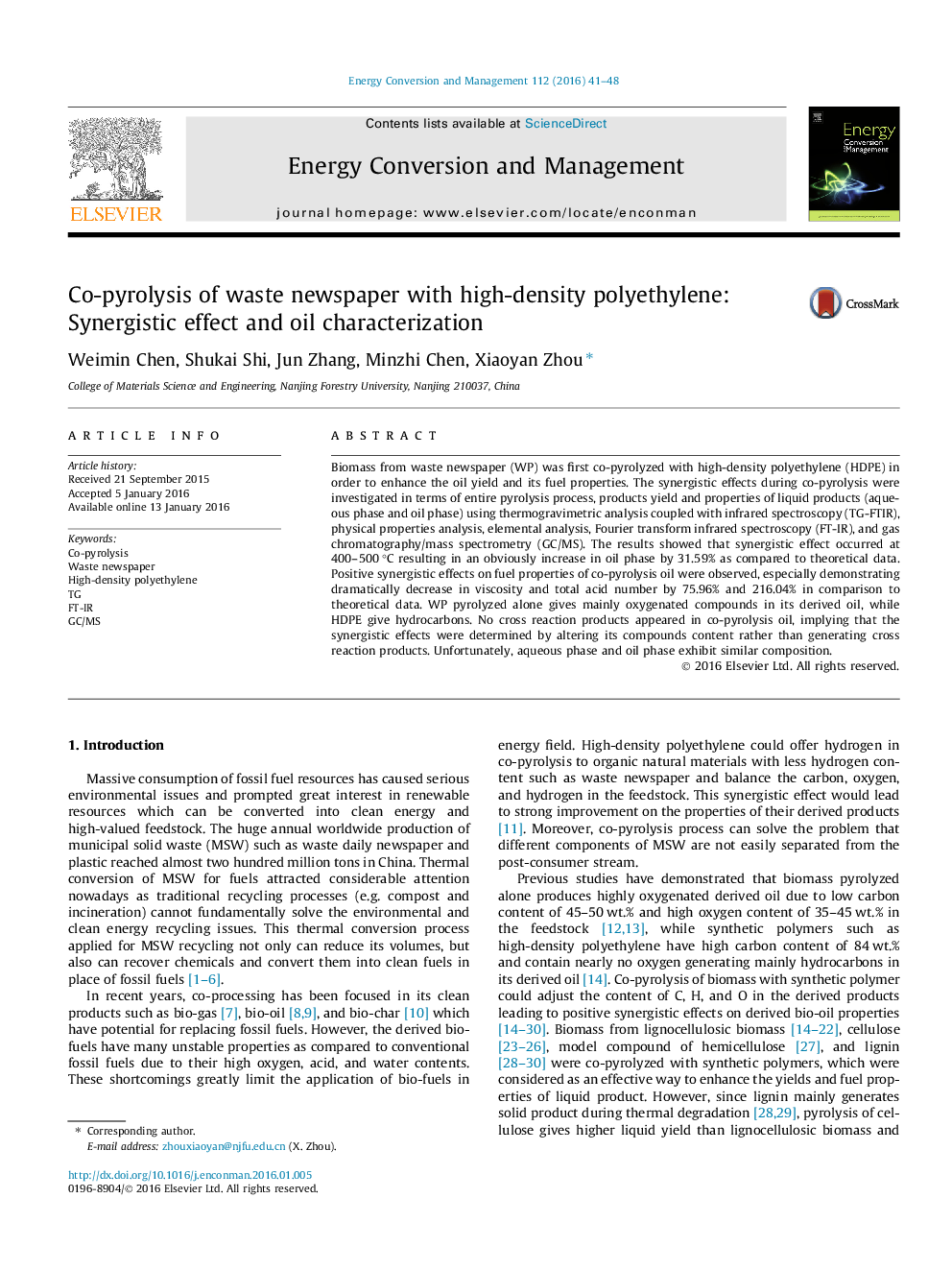| Article ID | Journal | Published Year | Pages | File Type |
|---|---|---|---|---|
| 763510 | Energy Conversion and Management | 2016 | 8 Pages |
•Synergistic effect during co-pyrolysis occurred at 400–500 °C.•Oil yield from co-pyrolysis was increased by 31.59% compared to theoretical data.•Viscosity and T.A.N. of co-pyrolysis oil were decreased by 75.96% and 216.04%.•Synergistic effect was determined by altering the compounds content in derived oil.
Biomass from waste newspaper (WP) was first co-pyrolyzed with high-density polyethylene (HDPE) in order to enhance the oil yield and its fuel properties. The synergistic effects during co-pyrolysis were investigated in terms of entire pyrolysis process, products yield and properties of liquid products (aqueous phase and oil phase) using thermogravimetric analysis coupled with infrared spectroscopy (TG-FTIR), physical properties analysis, elemental analysis, Fourier transform infrared spectroscopy (FT-IR), and gas chromatography/mass spectrometry (GC/MS). The results showed that synergistic effect occurred at 400–500 °C resulting in an obviously increase in oil phase by 31.59% as compared to theoretical data. Positive synergistic effects on fuel properties of co-pyrolysis oil were observed, especially demonstrating dramatically decrease in viscosity and total acid number by 75.96% and 216.04% in comparison to theoretical data. WP pyrolyzed alone gives mainly oxygenated compounds in its derived oil, while HDPE give hydrocarbons. No cross reaction products appeared in co-pyrolysis oil, implying that the synergistic effects were determined by altering its compounds content rather than generating cross reaction products. Unfortunately, aqueous phase and oil phase exhibit similar composition.
